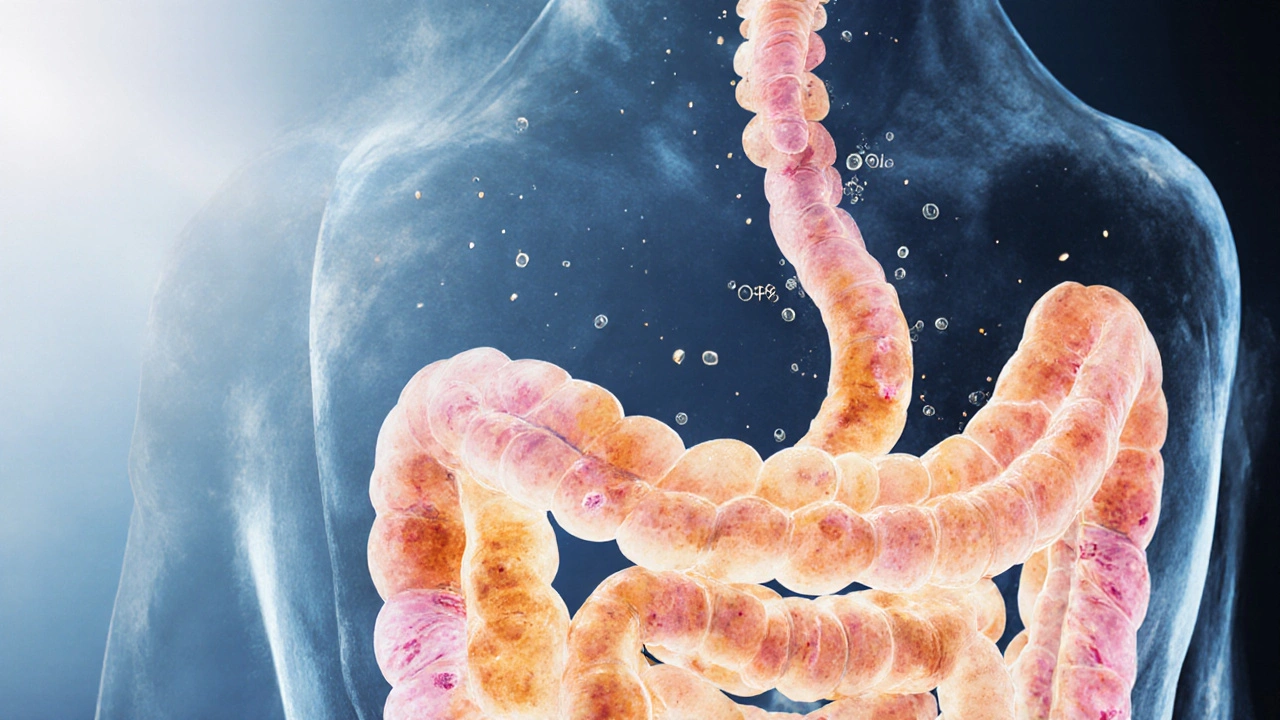Inflammatory Bowel Disease Skin Issues: What to Know
When dealing with Inflammatory Bowel Disease Skin, the skin problems that appear alongside Crohn's disease or ulcerative colitis. Also known as IBD‑related skin manifestations, this topic links gut health to the outer barrier, showing how inflammation in the intestine can trigger rashes, nodules, or ulcers on the body.
Two of the most common IBD subtypes, Crohn's disease, a chronic inflammation that can affect any part of the gastrointestinal tract and ulcerative colitis, inflammation limited to the colon and rectum, often bring skin issues such as erythema nodosum, pyoderma gangrenosum, and aphthous ulcers. These skin conditions are extra‑intestinal manifestations, meaning they occur outside the gut but share the same immune drivers. In fact, inflammatory bowel disease skin problems can appear before any bowel symptoms, act as a flare signal, or linger after the gut heals. Understanding this connection helps doctors choose the right biologic therapy, because drugs that calm gut inflammation often ease skin lesions too.
Common Skin Manifestations and How They Relate to IBD
Erythema nodosum shows up as tender red bumps on the shins; it signals a systemic immune response and usually fades when the underlying IBD is under control. Pyoderma gangrenosum, on the other hand, starts as a small sore that quickly expands into a painful ulcer with a purple border—this one needs aggressive immunosuppression. Other clues include livedo reticularis (a mottled net‑like pattern), vitiligo‑like depigmentation, and oral aphthae that mirror gut ulcers. The pattern is clear: the gut’s chronic inflammation fuels circulating cytokines, which then attack skin vessels or connective tissue. Managing the gut inflammation with agents like anti‑TNF α or anti‑integrin drugs often reduces skin flare‑ups, proving the gut‑skin axis is a two‑way street.
Nutrition also plays a role. Deficiencies in zinc, vitamin D, or B12—common in IBD due to malabsorption—can worsen skin healing and increase infection risk. Probiotic and prebiotic strategies aim to rebalance the gut microbiome, which recent research links to skin barrier integrity. Patients who keep their disease in remission, maintain a balanced diet, and follow a skin‑care routine (gentle cleansers, moisturizers with ceramides) tend to experience fewer and milder skin episodes. Lifestyle tweaks such as stress management, regular exercise, and smoking cessation further support both gut and skin health.
When a new rash appears, the first step is to rule out medication side‑effects, infections, or unrelated dermatologic conditions. A dermatologist familiar with IBD can perform a skin biopsy to confirm erythema nodosum or pyoderma gangrenosum. If the diagnosis points to an IBD‑related cause, the treatment plan usually combines topical therapy (steroids or calcineurin inhibitors) with systemic IBD control. In severe cases, short‑term systemic steroids are added, followed by a switch to a biologic that targets the specific inflammatory pathway involved.
Bottom line: skin issues are not just an afterthought for people with Crohn's disease or ulcerative colitis. They provide a visible window into the body’s overall inflammatory load and often guide treatment adjustments. Below you’ll find detailed articles that compare drug options, explain how lifestyle choices affect both gut and skin, and offer step‑by‑step guides for managing the most common IBD‑related skin conditions.
Colitis and Skin Problems: How They’re Connected
Explore how colitis triggers skin problems, learn the main dermatologic conditions linked to IBD, and get practical tips for diagnosis, treatment, and coordinated care.
